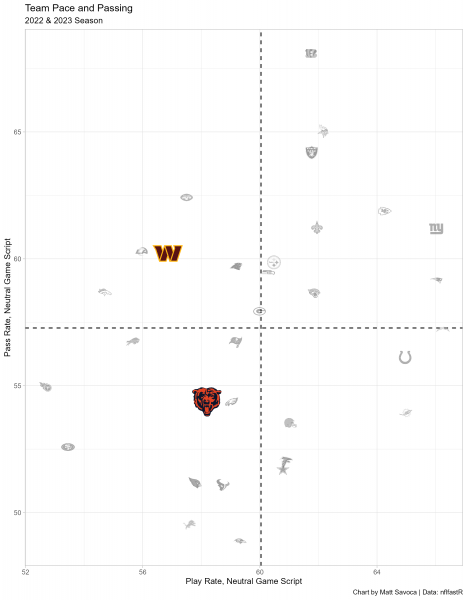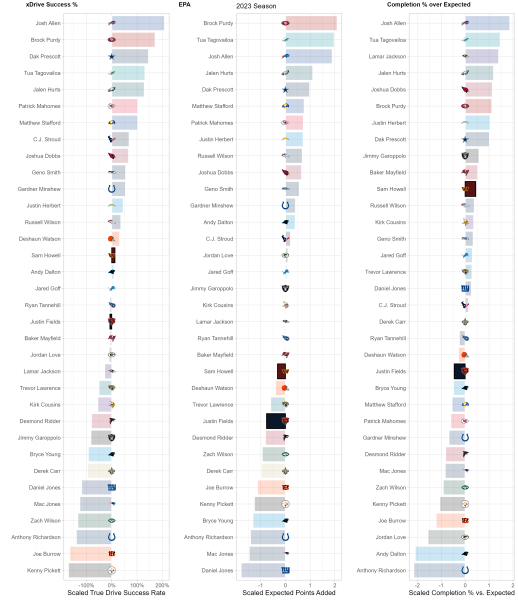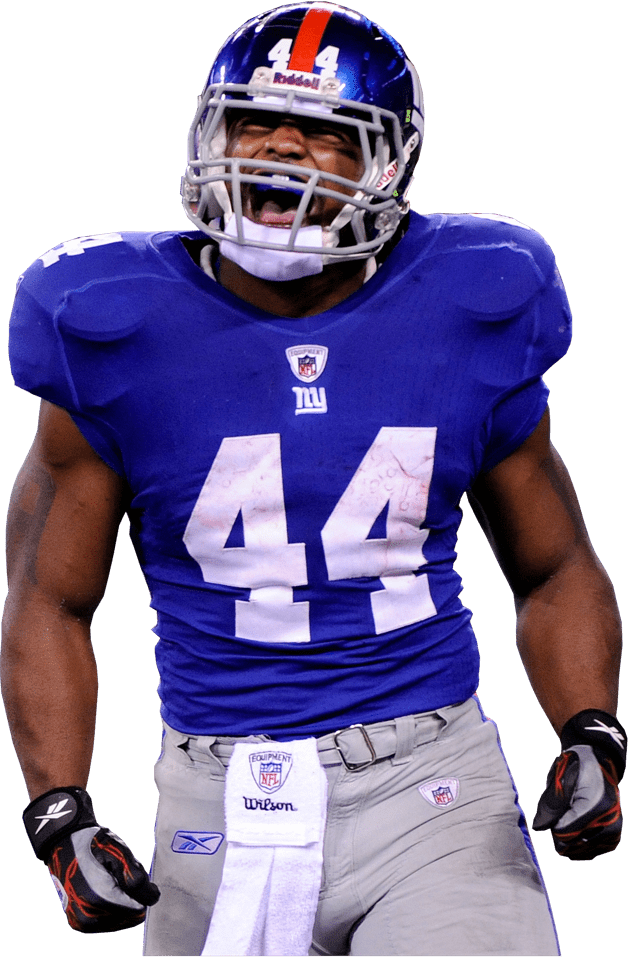Week 5 Thursday Night Football Single-Game NFL DFS: Top FanDuel & DraftKings Plays

Welcome to the showdown breakdown for Week 5 Thursday Night Football, where the slumping Bears face the Washington Commanders in a matchup that could define NFL mediocrity. The Bears are actively finding new ways to lose, as evidenced by their jaw-dropping loss to the Broncos in Week 4. On the other side of the ball, Washington is sitting at a modest 2-2 in the fiercely competitive NFC East, only ahead of the Giants. With the Bears missing starting DB Eddie Jackson and WR Chase Claypool, who criticized his own team's utilization of him, the Commanders seem poised to take control, at least on paper. Let's break down this less-than-stellar matchup and identify some unique DFS strategies for this single-game slate.
For up-to-the-minute updates leading up to kickoff, be sure to join the 4for4 DFS subscriber-only Discord channel.
Game Environment

This chart represents the general offensive strategies for each team when the game outcome is still in question (win probability between 20% and 80%). The final two minutes of each half are also excluded. We’ll include last year’s statistics through Week 4 of the regular season. Teams in the upper-right quadrant pass more often and play faster than the average NFL team in neutral game scripts, and conversely, teams in the lower-left quadrant play slower and run more often than the average NFL team.
Bears (+5, 19.25) @ Commanders (-5.5, 25.25); Over/Under 44.5
Washington comes into this game favored by 5.5 points but with a measly implied total of 25.25. First-year starter QB Sam Howell has Washington playing slightly above the league average in game-script-adjusted pass rate. However, this has not translated into a high-scoring offense, they rank right at the league average in offensive touchdowns per game. The tempo for Washington, like their scoring, has been mediocre, reflected in their neutral game script play rate.
On the other side, the Bears, with an implied total shy of 20, aren't expected to light up the scoreboard either, despite dropping 28 on the Broncos last week. Their neutral game script play rate leans slower than the league average. Despite flashes from Justin Fields, the Bears' offense has been a disappointment from a consistency standpoint. And once again, they’ll be without troubled WR Chase Claypool on offense, who is away from the team (and likely to be traded or released) after his disparaging public remarks about the offense prior to Week 4. With two identity-less offenses that rely solely on big (broken) plays, this game environment suggests a battle where, if there are a ton of points scored, it's as likely to be an accidental shootout due to defensive blunders rather as it is a purposeful high-scoring affair, making this matchup a particularly tough DFS puzzle.
Quarterback Analysis

While there may be 22 people on the field for every play, each play and game is heavily dictated by the performance of each team’s quarterback. While efficiency isn’t everything for quarterbacks, it is the best indicator of future performance, so we use a trio of metrics to suss out top performers at the position compared to lackluster ones. xDrive Success %, or True Drive Success Rate, is a measurement of a QB’s ability to turn drives into scores weighted by sample size. EPA or Expected Points Added, is a measurement of the QB’s contribution, both running and throwing, to the team’s scoring and production vs. the average NFL team. Completion % over Expected (CPOE)represents the accuracy and efficiency of a QB’s passes compared to league expectations.
While neither team's offense promises fireworks, both Justin Fields and Sam Howell offer a mix of risk and reward that could still define the DFS slate (they're quarterbacks on a one-game slate, after all). When analyzing Fields, he has been better than many would expect in some areas, but painfully below average in others. On one hand, he's top-five in the NFL in deep ball completion percentage, pressured completion percentage, and red zone completion percentage, suggesting a quarterback who can thrive under duress and who isn't afraid to take risks. However, it's a different story when he has time, as he ranks 28th in completion percentage from a clean pocket. Fields also has eight passes that have been deemed interceptable, sixth worst in the league. The silver lining for DFS players is, of course, his rushing ability. Averaging seven rushes per game, Fields provides both a floor and a ceiling that make him a viable CPT play in many different game scripts.
Sam Howell, the second-year quarterback for Washington, is on pace to break a record nobody wants—the most sacks taken in a season. While his offensive line has expectedly been one of the worst in terms of protection rate, Howell himself shares some of the blame. A staggering 35% of all pressures against him have been converted into sacks, the highest rate for any quarterback. His true passer rating, which adjusts for drops and throwaways, places him at 29th in the league. He's not getting the ball out (or escaping the pocket) in time, and when he does his decisions are highly volatile. His 12 plays charted as Dangerous are third-most in the NFL, but he also has 6 Big Time Throws, putting him in the top 10 at the position. He quietly ranks above Fields in terms of per-pass, per-drive, and per-game efficiency as noted by the chart above. At the very least this propensity for aggressiveness can still pay off in single-game DFS, especially against the Bears' bottom-three defense. Howell's sneaky rushing upside, with just one less scramble per game compared to Fields, adds another layer of intrigue to his DFS viability.
Core Plays and Auxiliary Options

- DFS & Season-Long Content
- Lineup Generator
- Optimal Cash & GPP Lineups
- Floor & Ceiling Projections
- -Leverage Scores
- -...and much much more!













